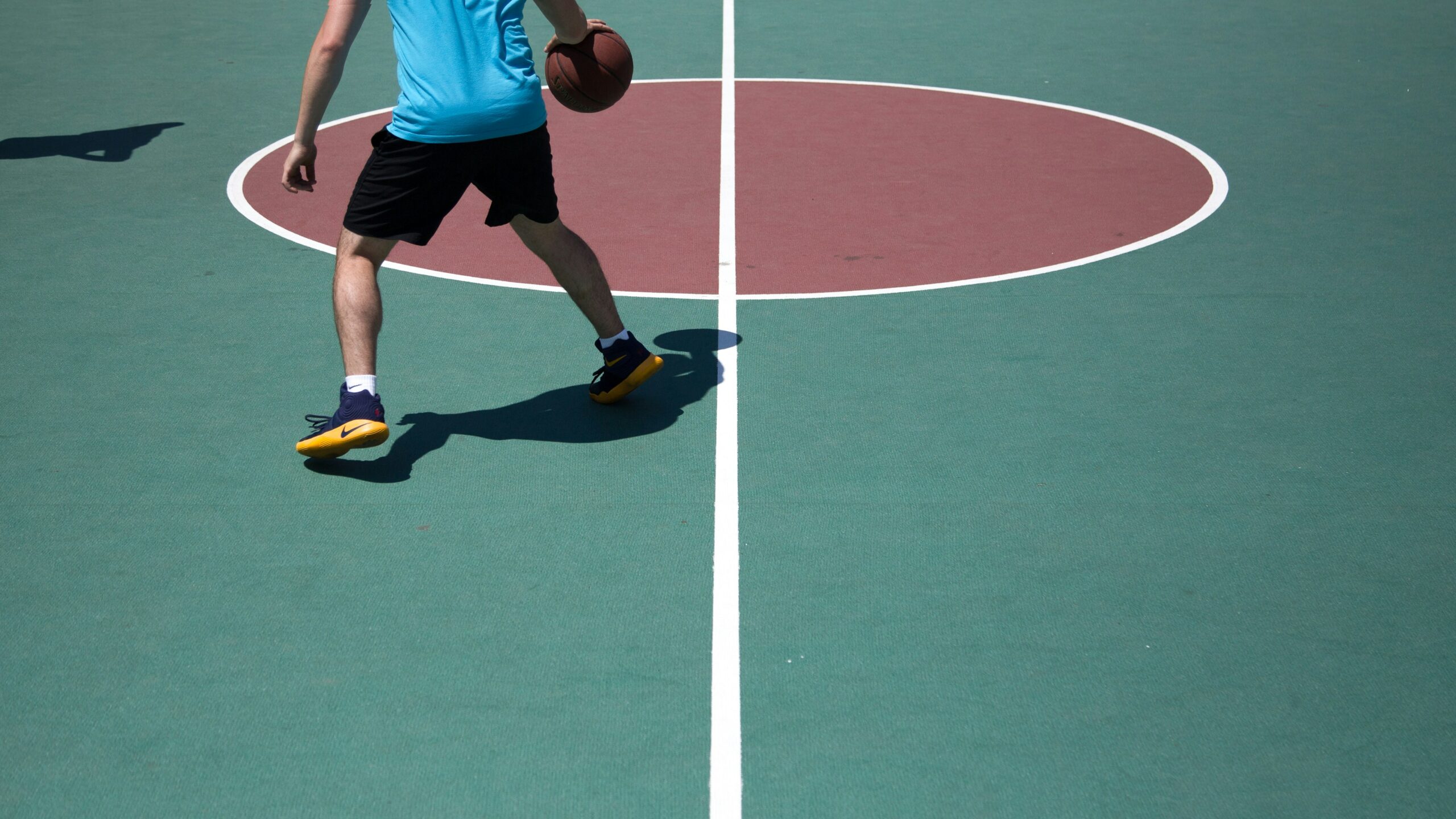
Dribbling might just be the most iconic skill in basketball, one of those things that really sets good players apart. For young players, mastering dribbling can help in the foundation of their game, giving them the confidence to move around on the court with ease. From controlling the ball to quickly navigating through opponents, a strong dribbling game lays the groundwork for scoring, passing, and making smart plays.
Basketball isn’t just about throwing the ball into the hoop. It’s much more about how you can maneuver the ball in a game setting. Having structured drills for beginners and a clear path to advance as skills improve is crucial. Drills not only enhance physical skills like coordination and agility but also instill mental qualities such as focus and determination. Working these drills into practice routines can transform budding enthusiasts into proficient ball handlers.
Training might sound serious, especially when it involves drills, but it’s important to make it fun. That’s where games and a playful approach come in handy. By integrating enjoyable activities into practice, young players are more likely to stay engaged, absorb the skills quicker, and use them effectively during games. It’s about learning without realizing you’re actually working hard.
Basketball drills designed for young players focus on more than just skill development. They teach them to be strategic, encourage teamwork, and let them experience real-game scenarios, all while keeping it enjoyable and exciting. Getting young athletes into such habits early on makes all the difference, setting a strong, fun-loving foundation to become skilled players.
Beginner Basketball Dribbling Exercises
Starting out with dribbling in basketball? It’s all about building control and confidence with the ball. Let’s break down some of the basic drills perfect for young and budding players looking to sharpen those dribbling skills.

Pound Drills
Pound Drills are all about muscle memory. Dribbling with strength helps in honing control and agility. Kids learn to balance their power with precision by pounding the ball hard and low with both hands. Think of it as the basic strength-training routine for those wrists. Just make sure they’re bending those knees and staying in control.
Wrap Drills
Wrap Drills throw a nice twist into the mix. It’s like a dance with the ball—wrapping it around the body in a figure-eight move. This isn’t just about looking cool. It’s about teaching kids how to switch hands while keeping the ball protected, which is super handy when maneuvering through tight spaces on the court against defenders.
Zig-Zag Drills
Zig-Zag Drills take things up a notch by incorporating directional changes. Setting up a zig-zag pattern with cones helps players refine their agility. It’s less about speed and more about balance and control as they zig and zag through, making sharp cuts and using both hands. It’s an essential move for dodging defenders in a game.
Stationary Crossovers
Stationary Crossovers, now here’s a game changer. This drill is all about switching the ball from one hand to the other with speed and accuracy. Mastering a solid crossover where kids keep the ball low can really throw off defenders and open up pathways on the court. Practicing this helps young players build reflexes and strategic thinking.
Advanced Dribbling Techniques to Elevate Skills

Once young players have got the hang of the basics, it’s time to take things up a notch with advanced dribbling drills. These exercises don’t just enhance control—they’re about developing composure and strategic playmaking on the court.
Change of Speed Drill
The Change of Speed Drill is a game-changer for creating advantages. Kids learn to shuffle their dribbling pace to keep defenders guessing—slowing down to assess options and speeding up to break past opponents. Mastering these shifts is key to controlling the game’s tempo and keeping the opposition on their toes.
Chair Drills
Chair Drills add a new dimension to ball-handling under pressure. By weaving between chairs or cones, players navigate tight spaces while maintaining control. This drill simulates real-game pressure, helping them practice quick reactions and more effective movements when face-to-face with defenders.
Behind-the-Back-Drills
Behind-the-Back Drills introduce players to more intricate techniques. Switching the ball behind the back can surprise opponents and create space to maneuver freely. It’s all about smooth transitions and making the move second nature, giving young hoopsters an edge during intense plays.
Two-Ball Dribbling
Two-Ball Dribbling ramps up the challenge, where players juggle two balls simultaneously. It’s not just a flashy show of skill—this drill improves hand-eye coordination and reinforces ambidexterity, pushing players to think and react quickly. It prepares them for handling unexpected game situations with ease.
Fun Basketball Dribbling Games for Kids
Mixing fun with learning is a winning combo when it comes to basketball training. Dribbling games are a fantastic way to keep young players interested while sneaking in some real skill-building. These games do wonders in translating practice drills into game-time instincts.
Dribble Tag
Dribble Tag injects excitement into any practice session. One player becomes the ‘tagger’ while the rest dribble around trying to avoid being tagged, all while maintaining control of their ball. This game forces players to think on their feet, move quickly, and protect the ball as they dodge the tagger. It’s an engaging way to practice dribbling under pressure.
Sharks and Minnows
Sharks and Minnows is another crowd favorite, where players dribble from one side of the court to the other without getting tagged by the ‘sharks’. This game’s all about quick direction changes and strategizing how to avoid the sharks. Keeping the ball low and controlled while moving with speed helps players replicate the quick decisions needed in real games.
Snake
Snake builds team dynamics alongside individual skills. Players line up and dribble in sequence, mimicking a snake as they follow the leader through courses. This drill boosts precision and awareness, as players need to sync up their movements and keep pace. Snake emphasizes coordination and teamwork, vital components in any team sport.
Dribble Knockout
Dribble Knockout brings out the competitive spirit, challenging players to maintain control of their dribble while attempting to knock others’ balls out of the bounds. It’s a high-energy game that emphasizes ball protection and defensive skills. Furthermore, it teaches players the importance of agility and anticipation, which come in handy during intense matches.
Conclusion
Dribbling is more than just a skill; it’s a fundamental building block for young basketball players. By practicing a combination of basic and advanced drills, players not only improve their physical ball-handling abilities but also develop the mental focus necessary for making smart decisions on the court. Adding fun games to practice helps keep kids engaged while reinforcing the skills they need for real-game situations. Whether they’re learning to control the ball or mastering advanced techniques, consistent practice sets the foundation for success both in basketball and in life.



Great article, Zachary! I completely agree that dribbling is the foundation for any strong basketball player, especially young ones. I’m curious about your take on balancing structured drills with free play. While drills like Zig-Zag and Chair Drills are fantastic for skill-building, how important do you think it is for young players to spend time just experimenting with the ball in unstructured environments?
Also, have you seen any benefits in mixing traditional drills with modern training tech, like dribbling goggles or smart basketballs? Would love to hear your perspective on how these tools might accelerate skill development or if you think sticking to basics is the better route.
Looking forward to hearing your thoughts!
Eric
Thanks for the great comment, Eric! I totally agree that a mix of structured drills and free play is key for young players. Drills like Zig-Zag and Chair Drills are awesome for building technique, but unstructured play is where they really start to experiment and develop their creativity. I’ve always loved seeing kids just having fun with the ball, figuring out new moves on their own.
As for the modern training tech, I think gadgets like dribbling goggles and smart basketballs can definitely add value, especially for tracking progress. But I’m a firm believer in the basics—getting those down first sets the stage for anything else. It’s all about finding that sweet spot!
Great insights on basketball dribbling drills! As someone who isn’t an athlete, I found this post really enlightening. The emphasis on mastering dribbling to build confidence and foundational skills is spot on. I love how you highlight the importance of both physical and mental development through structured drills.
The detailed breakdown of beginner and advanced drills, like Pound Drills for muscle memory and Behind-the-Back Drills for advanced techniques, really shows how each drill contributes to skill-building. Integrating fun games like Dribble Tag and Sharks and Minnows is such a smart way to keep young players engaged while honing their skills.
Thank you for sharing these valuable strategies. It’s inspiring to see how these drills can help young players grow both on and off the court!
Thank you so much for your thoughtful comment! I’m glad you found the post helpful, especially as someone new to the world of basketball. It’s great to hear that the breakdown of drills resonated with you, and I agree that incorporating fun games is key to keeping young players engaged. Building confidence through dribbling is a powerful tool, not just for basketball, but for life. I’m thrilled that you found the strategies inspiring—here’s to helping young athletes grow both on and off the court!
This article is such a fantastic resource for young basketball players and their coaches! I love how you’ve broken down the dribbling drills into clear, actionable steps that are easy to follow. The progression from basic to more advanced techniques makes it approachable for players of all skill levels. Plus, the emphasis on building foundational skills and having fun ensures that young athletes stay motivated while learning.
Thank you so much for your thoughtful feedback! I’m really glad you found the breakdown of the drills clear and useful. My goal is to make learning dribbling techniques as accessible and enjoyable as possible for players at every level. It’s all about creating a balance between skill development and fun so that players stay motivated and excited to improve. If you have any suggestions or specific drills you’d like to see more of, feel free to share—I’m always looking to improve the resources for young athletes!
Thank you for sharing such a good piece on the importance of dribbling in basketball! Your breakdown of beginner and advanced drills is incredibly helpful for young players looking to build their skills. I love how you emphasize the balance between structured drills and making practice fun with games. It’s so important to keep young athletes engaged and excited about learning. How do you find the right balance between structured drills and free play in your training sessions?
Thank you for your kind words! I’m glad you found the breakdown of the drills helpful. When it comes to balancing structured drills and free play, I think it’s key to keep the purpose of each in mind. Structured drills are great for building foundational skills and focusing on technique, while free play allows players to experiment, be creative, and apply what they’ve learned in a more game-like setting. I like to start with a few focused drills to work on specific skills, then transition into some fun, competitive games that let the players express themselves. This mix keeps them engaged while reinforcing what they’ve learned.